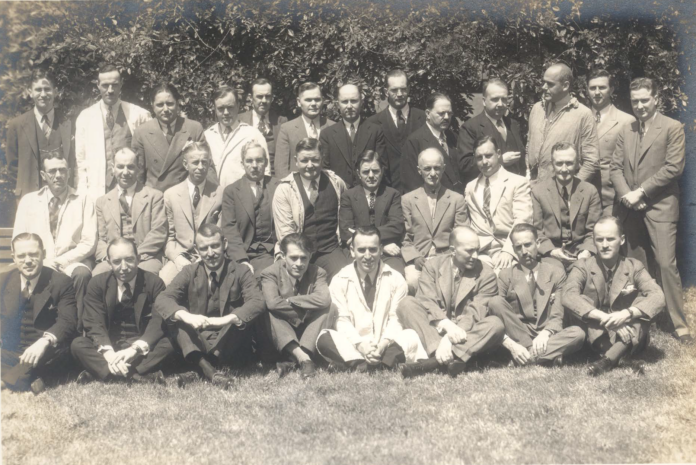Before the COVID-19 pandemic, the AANS was planning significant changes to its annual scientific meeting to increase engagement and education. I promise to return to that topic later in this column, but first I’d like to review some of the seminal moments of this association’s founding. The origins of this association closely link with the changes you’ll see starting in August.
In July 1931, the only neurosurgical organization was the Society of Neurological Surgeons, which was established in 1920. Because it was a small group, members took turns hosting the annual meeting, which began with an operative clinic in the morning and the presentation of scientific papers in the afternoon. The practicality of this arrangement was strained, and the meeting time was filled with oral presentations of papers. As the specialty of neurosurgery continued to grow, younger neurosurgeons desired more interactive and engaging education during the meetings. Temple Fay wrote the following to R. Glen Spurling as they, and William P. Van Wagenen and R. Eustace Semmes, began to map out a plan for a new neurosurgical society.
I would far rather see a group of younger men organized to meet regularly, in a round table discussion of problems confronting the neurosurgeons, with a definite program assigned … than to gather each year at some clinic to see the host, ‘strut his stuff’ to the envy or unfair criticism of those attending the meeting.
These ideas led to the creation of the Harvey Cushing Society, now known as the American Association of Neurological Surgeons (AANS).
Fast forward to recent specialty meetings, across all organizations, where we’ve watched the meeting become largely strut (didactic presentations/lectures), rather than following the original directive to provide problem-solving roundtables (dialogue).
Pre-pandemic, the AANS conducted focus groups with meeting attendees and heard – loud and clear – that we are right back to the time BEFORE the association started; the meeting critique from 1931 was once again valid. We realize neurosurgical meetings need to become a forum for productive and meaningful exchange of ideas. If the meetings fail at this, we are failing all of neurosurgery and our patients.
As the incoming president, the current president and the past president work together to guide the AANS, there is a similar continuity built into meeting planning, where the physician committee leads roll up, starting as Scientific Program Subcommittee chair, to Annual Meeting chair to sitting on that committee as the past chair. Ensuring the services of volunteers for at least three years around these essential roles has helped us create real change and I’d like to thank Drs. Gerry Grant, Fred Barker, Rich Byrne, Adam Arthur and Mike Wang, along with all of the Executive Committee members I’ve worked with over the past five years. What you will experience in Orlando is a testament to the Annual Meeting Committee and Scientific Program Subcommittee’s ability to listen and to innovate.
What can you expect in Orlando? You can expect to be challenged. We are introducing sessions where you diagnose along with the experts as real cases are discussed. You can expect to learn from patients, as we have invited a few to come and speak about their experiences on the other side of the OR. You can expect to get your hands on the latest equipment, as we have retooled the show floor with theaters, mobile labs and timely follow-up to plenary sessions that reference the latest equipment that you’ll find later on the floor.
It isn’t only the content that has changed. The footprint of the meeting is shifting. We have heard that coverage is difficult and believe that moving more content to the weekend will open the meeting up to more participants. For the first time in Orlando, a plenary session will start on Sunday with the ‘Best of Boston’. The 2020 Annual Meeting, with Dr. Chris Shaffrey as president, was scheduled for April 25-29 in Boston. Unfortunately, the pandemic necessitated the cancellation of the meeting. By August, it will have been more than 28 months since the AANS was able to host a meeting. The “Best of Boston” will be a celebration of the fact we can once again convene and will highlight the key presentations, awards, as well as Dr. Shaffrey’s Presidential Address originally planned for April 2020.
The meeting theme, Neurosurgery United: Stronger Together, will play out in the Opening Reception in a meaningful way. Instead of an off-site venue, we are going to come together, with our industry partners, on the show floor, where all of neurosurgery can finally reconnect. I’m so excited for all of us to be together after all this time.
You will see so much that is new in Orlando in August. Our hotel block opens this month (March) and registration will open mid-May. We haven’t had such a family-friendly venue in many years, and I hope that you are able to take advantage of all that Orlando offers to both young and young-at-heart.
Neurosurgery United: Stronger Together – When I proposed this theme, none of us had heard of COVID-19. That said, I don’t think I could have selected a theme with greater meaning to the specialty in 2021.
Join us in Orlando. This meeting is not to be missed.








